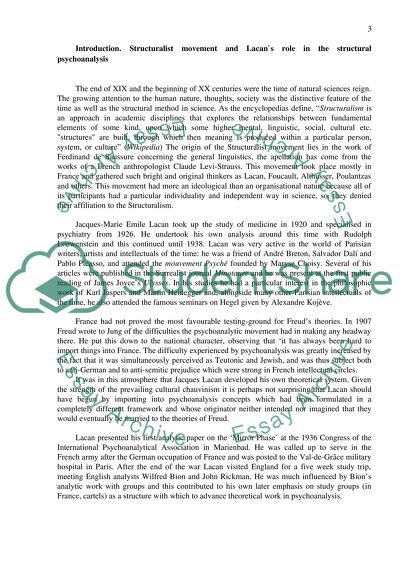Cite this document
(Application of Jacques Lacan's Theories Research Paper Example | Topics and Well Written Essays - 4750 words, n.d.)
Application of Jacques Lacan's Theories Research Paper Example | Topics and Well Written Essays - 4750 words. https://studentshare.org/psychology/1526785-application-of-jacques-lacans-theories
Application of Jacques Lacan's Theories Research Paper Example | Topics and Well Written Essays - 4750 words. https://studentshare.org/psychology/1526785-application-of-jacques-lacans-theories
(Application of Jacques Lacan'S Theories Research Paper Example | Topics and Well Written Essays - 4750 Words)
Application of Jacques Lacan'S Theories Research Paper Example | Topics and Well Written Essays - 4750 Words. https://studentshare.org/psychology/1526785-application-of-jacques-lacans-theories.
Application of Jacques Lacan'S Theories Research Paper Example | Topics and Well Written Essays - 4750 Words. https://studentshare.org/psychology/1526785-application-of-jacques-lacans-theories.
“Application of Jacques Lacan'S Theories Research Paper Example | Topics and Well Written Essays - 4750 Words”. https://studentshare.org/psychology/1526785-application-of-jacques-lacans-theories.


